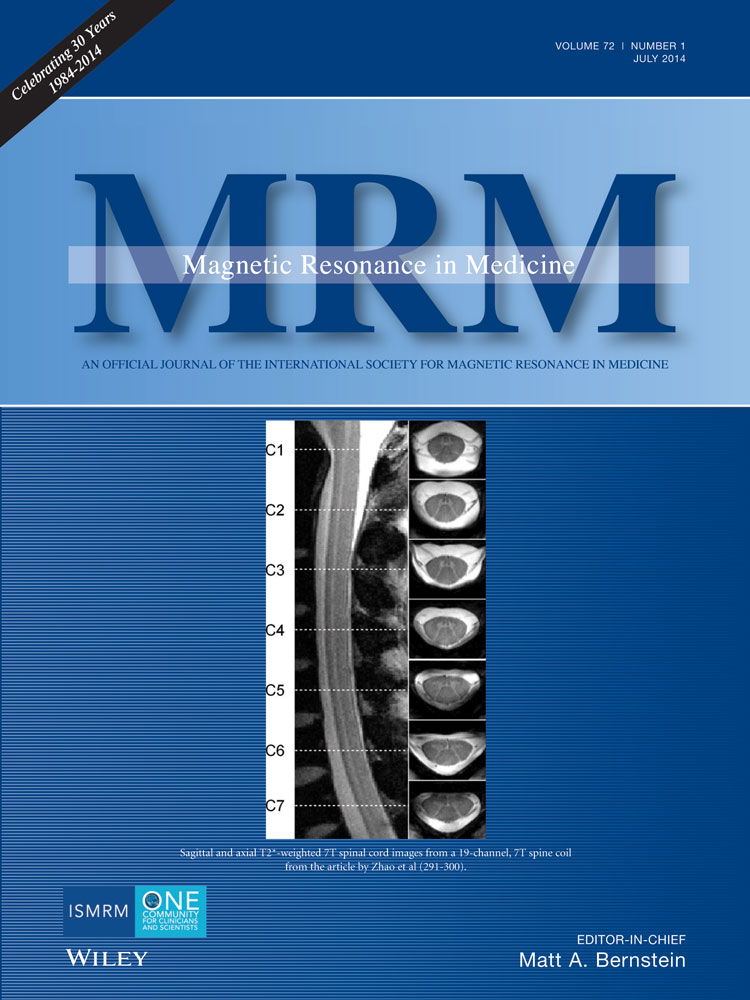A controllable susceptibility marker for passive device tracking
Abstract
Purpose
To design and demonstrate a new susceptibility-based tracking device with an artifact that can be mechanically turned on and off, thus permitting tracking and imaging at the device tip with limited artifact.
Methods
The magnetic susceptibilities of readily obtainable grades of titanium and graphite were measured. Using numerical optimization, layer thicknesses for three concentric cylinders were found where the field from the graphite layer maximally cancelled the fields from titanium layers. The tracking elements were fabricated for an outer diameter of 3 mm and attached to a catheter to show feasibility of detection in phantoms and in vivo.
Results
The device was successfully integrated into a 9F catheter, and its use with conventional guidewires under fluoroscopy was demonstrated by guiding the catheter through the bifurcation into the carotid artery. MR images including the catheter tip were acquired with the device in both the “on” and “off” positions.
Conclusion
A new passive tracking device with a susceptibility effect that can be enabled and disabled by sliding one of the components was designed, fabricated, and demonstrated in phantoms and in vivo. The device may also be integrated into many different interventional MR devices such as needles, ultrasound transducers for prostate biopsy, or any catheter-based devices. Magn Reson Med 72:269–275, 2014. © 2013 Wiley Periodicals, Inc.




